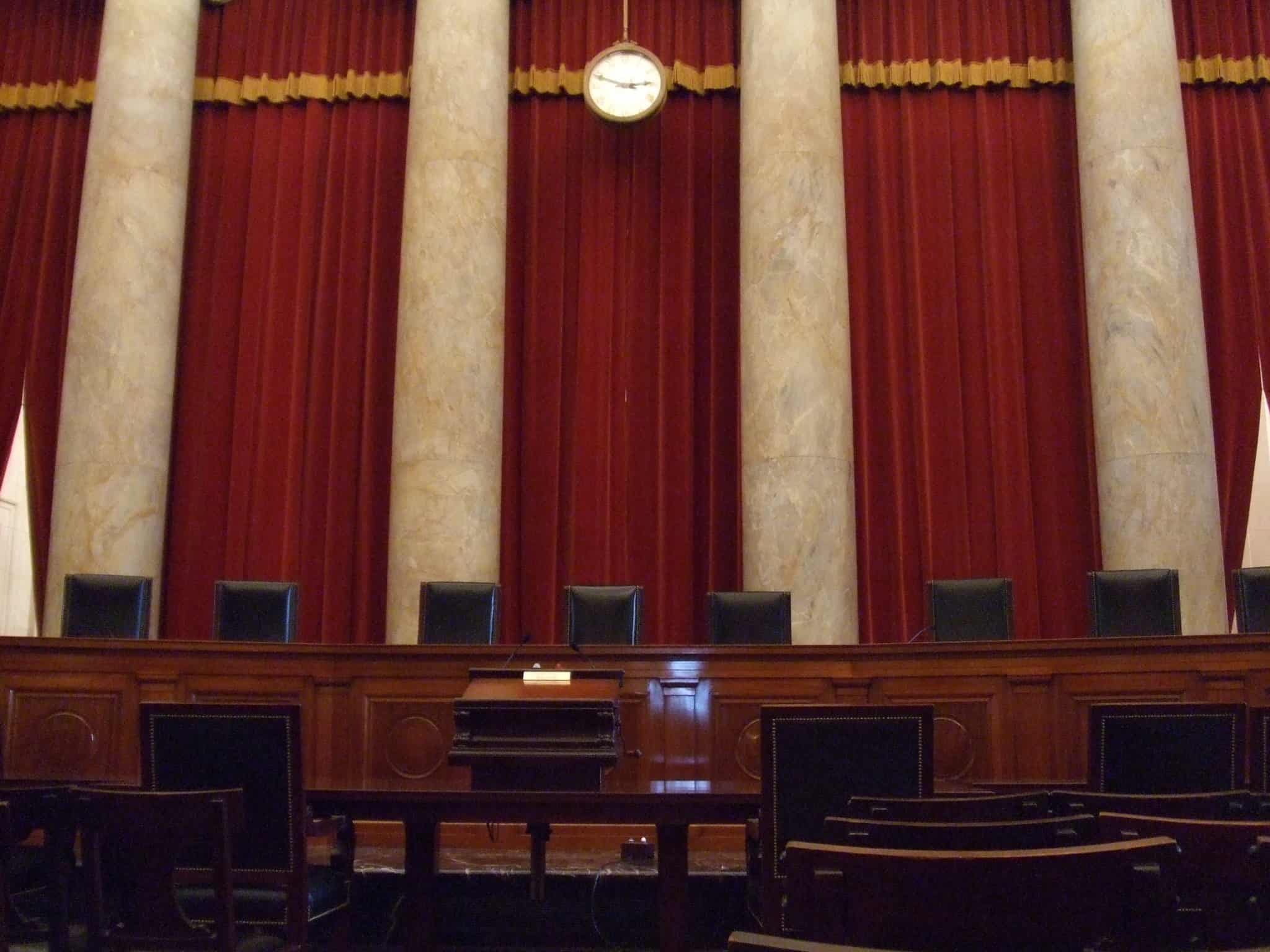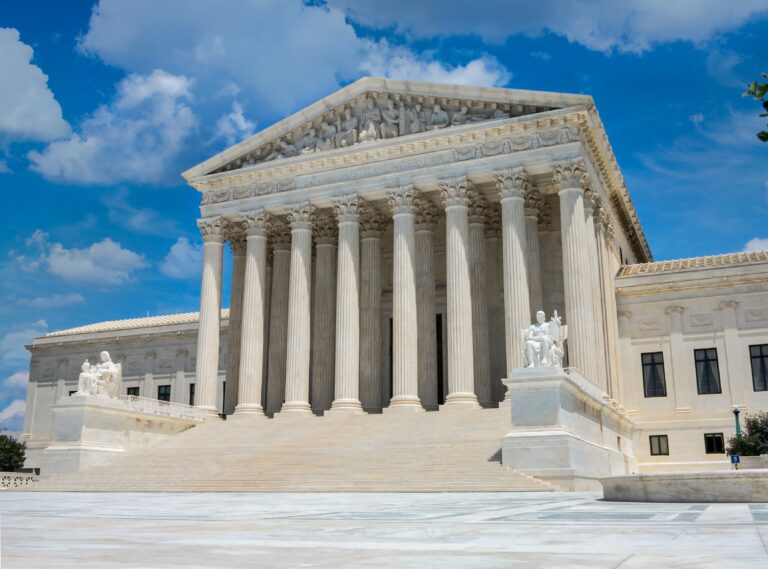
Andrew Strom has been a union lawyer for more than 25 years. He is an Associate General Counsel of Service Employees International Union, Local 32BJ in New York, NY. He is the author of Caught in a Vicious Cycle: A Weak Labor Movement Emboldens the Ruling Class, 16 U.St. Thomas L.J. 19 (2019); Boeing and the NLRB: A Sixty-Four Year-old Time Bomb Explodes, 68 National Lawyers Guild Review 109 (2011); and Rethinking the NLRB’s Approach to Union Recognition Agreements, 15 Berkeley J. Emp. &; Lab. L. 50 (1994), and has written for Dissent and Dollars and Sense. He also taught advanced legal writing at Fordham Law School. He received his J.D. magna cum laude from Harvard Law School. The views he expresses on this blog are his personal views, and should not be attributed to SEIU Local 32BJ.
The media is giving so much attention to how the next Supreme Court Justice may affect the continued vitality of Roe v. Wade that voters may not fully appreciate how yet another Donald Trump appointee on the court will cement the Court’s anti-worker tilt for decades. On one level, Judge Barrett’s nomination is less significant for workplace issues because there are already five reliable votes on the Court for the Chamber of Commerce’s agenda. But, if the 48 year-old Barrett were put on the bench, it could mean forty years of her writing and joining opinions favoring bosses over workers. In her short time on the Court of Appeals, Judge Barrett has not authored many notable labor and employment decisions. While Barrett hasn’t written anything as egregious as Justice Gorsuch’s frozen trucker dissent, or Justice Kavanaugh’s killer whale dissent, her decision to sign on to the majority opinion narrowing the scope of the Age Discrimination in Employment Act (ADEA) in Kleber v. Care Fusion Corp., offers insight into where she stands when it comes to workplace protections.
I’ve written about Kleber before on this blog, as has Samuel Estreicher. The issue in Kleber was whether the provision in the ADEA that outlaws employment practices that have a disparate impact on older workers applies to job applicants, or only to an employer’s current employees. You might think that a single decision where Barrett didn’t even write the opinion can’t possibly tell us much about how she will decide other workplace issues. But, when it comes to judges, you often don’t need a large sample size. If all you knew about a Justice was which side they were on in Janus or Epic Systems, that would tell you plenty. And, even though the issues in those two cases were very different, it’s not a coincidence that the Justices lined up the same way in both cases. The dissenters in Kleber included not only judges appointed by Democrats, but two judges appointed by Republican Presidents. Yet Barrett chose to join the other three Trump appointees and four other Republican appointees to narrow protections for workers despite consistent agency interpretation, Supreme Court precedent, and express Congressional statement of purpose to the contrary.
The ADEA was enacted in 1967. It was originally enforced by the Department of Labor, and since 1979, the Equal Employment Opportunity Commission (EEOC) has had responsibility for promulgating regulations interpreting its provisions. In 1981, during the Reagan Administration, after notice and comment rulemaking, the EEOC adopted a rule that applied the disparate impact provision to job applicants. That rule was consistent with the position the Department of Labor had previously taken. In 2005, Justice Scalia, described the agency’s consistent position regarding this rule as presenting “an absolutely classic case for deference to agency interpretation.”
Not only did the expert agency consistently interpret the disparate impact provision to apply to job applicants, but in Griggs v. Duke Power, the Supreme Court held that what was then identical language in Title VII of the Civil Rights Act barred an employer from imposing a “requirement of a high school diploma or passing of intelligence tests as a condition of employment” for certain jobs. Griggs was a class action case brought on behalf of current employees and others “who may hereafter seek employment” with the company.
And if the agency interpretation and the Supreme Court decision were not enough, in the Statement of Findings and Purpose set forth in the first section of the ADEA, Congress declared that it was passing the law because “older workers find themselves disadvantaged in their efforts to retain employment, and especially to regain employment when displaced from jobs.” In Kleber, the defendant employer was at a loss to offer any explanation as to why Congress would have foreclosed job applicants from bringing disparate impact claims against employers.
Nevertheless, Judge Barrett joined each of the Trump appointees on the Seventh Circuit to find that job applicants may not bring disparate impact claims against employers under the ADEA. To achieve that result, they misread the holding in Griggs, and they pronounced this disputed provision “unambiguous,” which meant they could disregard the agency’s interpretation as well as the clear statement of Congressional intent.
Barrett and the other Trump appointees ruled that Griggs did not control because the named petitioners in Griggs were current employees of Duke Power. The dissenting judges in Kleber pointed out that not only did the class in Griggs include future applicants, but in briefs and oral argument before the Supreme Court, the partiesreferred to hiring – the lawyer for Duke Power said at one point in oral argument, “we’re talking about which employee should fit into a particular job or which employee should be hired in the first place.” Thus, to quote from the Kleber dissent, there was no reason to “treat the Supreme Court’s references in Griggs to hiring as careless slips of the pen.”
The provision at issue states that:
“it shall be unlawful for an employer to limit, segregate, or classify his employees in any way which would deprive or tend to deprive any individual of employment opportunities or otherwise adversely affect his status as an employee because of such individual’s age.”
Even though Barrett and her colleagues conceded that “any individual” is “an expansive term” that would appear to cover job applicants, they nevertheless concluded that the statutory language so clearly does not apply to applicants that there was no need to consider what they conceded was Congress’s “clear aim” – to protect older job applicants. If I were grading this provision as an English teacher, I would give Congress at best a “C.” It’s not hard to see how it could have been edited to make it clearer that the provision covered discrimination against job applicants. But, it’s one thing to say the provision is a mess. It’s quite another to declare that it unambiguously applies only to current employees.
During the confirmation hearings, you will probably hear a lot about “judicial modesty.” Barrett will claim that all she does is try her best to interpret each statute as written. But, as Justice Stevens once explained in dissenting from a five-to-four anti-worker decision, “[a] method of statutory interpretation that is deliberately uninformed, and hence unconstrained, may produce a result that is consistent with a court’s own views of how things should be, but it may also defeat the very purpose for which a provision was enacted.” I don’t think it’s a coincidence that the outcome in Kleber lines up with the policy preferences of Mitch McConnell and the other Republican Senators. If Judge Barrett gets on the Supreme Court, I expect her to join a lot of similar decisions giving victories to employers and narrowing protections for workers.









Daily News & Commentary
Start your day with our roundup of the latest labor developments. See all
April 19
Alabama and Louisiana advance anti-worker legislation; Mercedes workers in Alabama set election date; VW Chattanooga election concludes today.
April 18
Disneyland performers file petition for unionization and union elections begin at Volkswagen plant in Tennessee.
April 18
In today’s Tech@Work, a regulation-of-algorithms-in-hiring blitz: Mass. AG issues advisory clarifying how state laws apply to AI decisionmaking tools; and British union TUC launches campaign for new law to regulate the use of AI at work.
April 17
Southern governors oppose UAW organizing in their states; Florida bans local heat protections for workers; Google employees occupy company offices to protest contracts with the Israeli government
April 16
EEOC publishes final regulation implementing the Pregnant Workers Fairness Act, Volkswagen workers in Tennessee gear up for a union election, and the First Circuit revives the Whole Foods case over BLM masks.
April 15
The Supreme Court ruled in favor of bakery delivery drivers in an exemption from mandatory arbitration case; A Teamsters Local ends its 18-month strike by accepting settlement payments and agreeing to dissolve